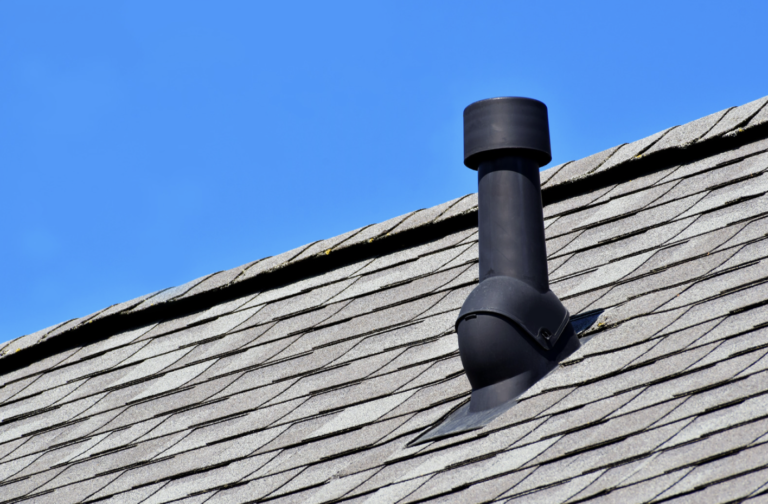Ventilation

Good Roof Ventilation Planning Makes a Difference!
On almost every roofing job we install some type of ventilation.
Have you ever been in your attic during the summer? The heat is about enough to make you not want to go into your attic. Shingles fail due to poor attic venting. Nearly 200 F heat can build up on a hot day in a poorly vented attic. That heat can slip past the sheathing (decking) and ruin fiberglass shingles. Heat builds up in the attic space which should cool off at night if the attic is properly ventilated.
Modern home construction methods result in better insulated and tighter homes, which save the homeowner money on energy bills, but makes the need for a well-ventilated attic even more important. Attic ventilation is necessary to prevent moisture problems, prevent heat build-up, reduce heating and cooling costs, and prevent ice dams. The benefit of proper ventilation for the homeowner is a cooler attic in the summer, a dryer attic in the winter and protection of the structural integrity of the home from moisture damage.
According to the National Roofing Contractors Association (NRCA), guidelines for roof ventilation have been established by several organizations. The American Society of Heating and Refrigeration Engineers (ASHRE) guidelines calls for a ratio of 1:150 – that is one square foot of net free vent area (NFVA) for every 150 square feet of ceiling area below the roof. Using that ratio, a 1,500-square-foot area would require 10 square feet of ventilated area. The Building Officers Code Association (BOCA) also supports the 1:150 ratio. If the structure has a vapor retarder, the ratio can be reduced to 1:300. Most shingle manufacturers make roof ventilation a prerequisite to warranting of the products.
Types of Ventilation
Exhaust Vents: roof louvers, gable louvers, turbines, ridgeline and power vents
Intake Vents: soffit vents
Low-Profile Vents: turtle type
Ventilation 101 – To Educate the Homeowner
Your home should have a ventilation system based on your attic size. The intake vents, such as soffit vents, will allow for the air to come in, and then the exhaust vents, such as gable or ridge vents, will allow for the hot air to escape. Therefore, leaving your attic cooler. Then with a combination of exhaust and intake vents this allows fresh air to circulate thru the attic.
